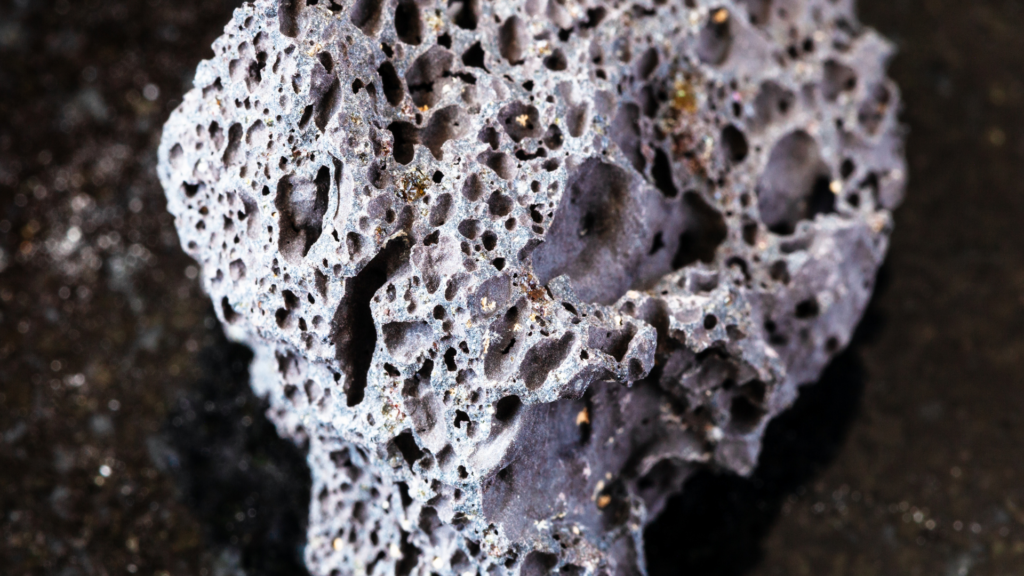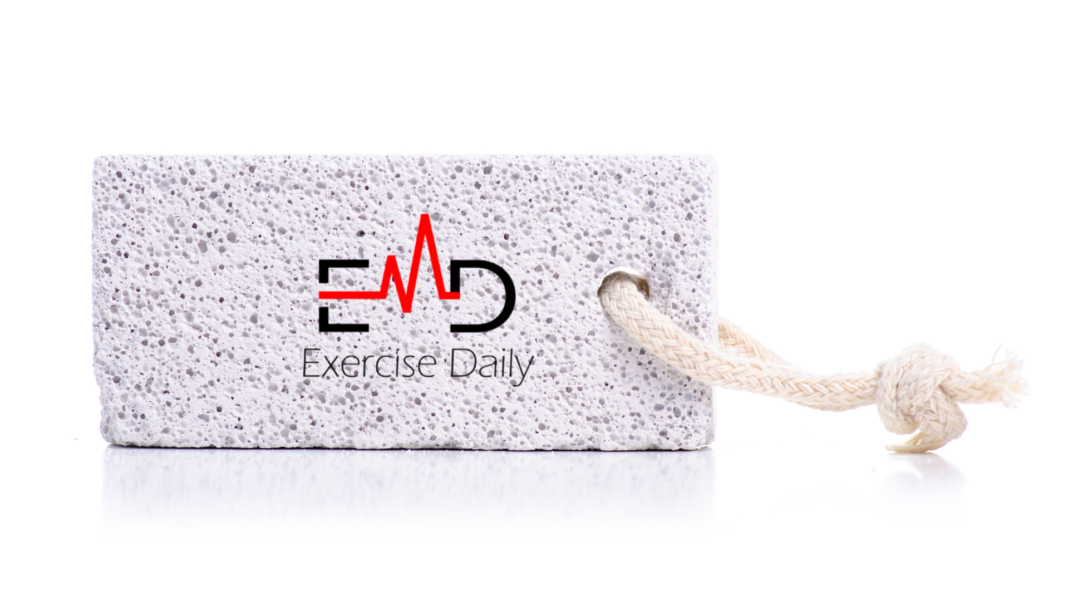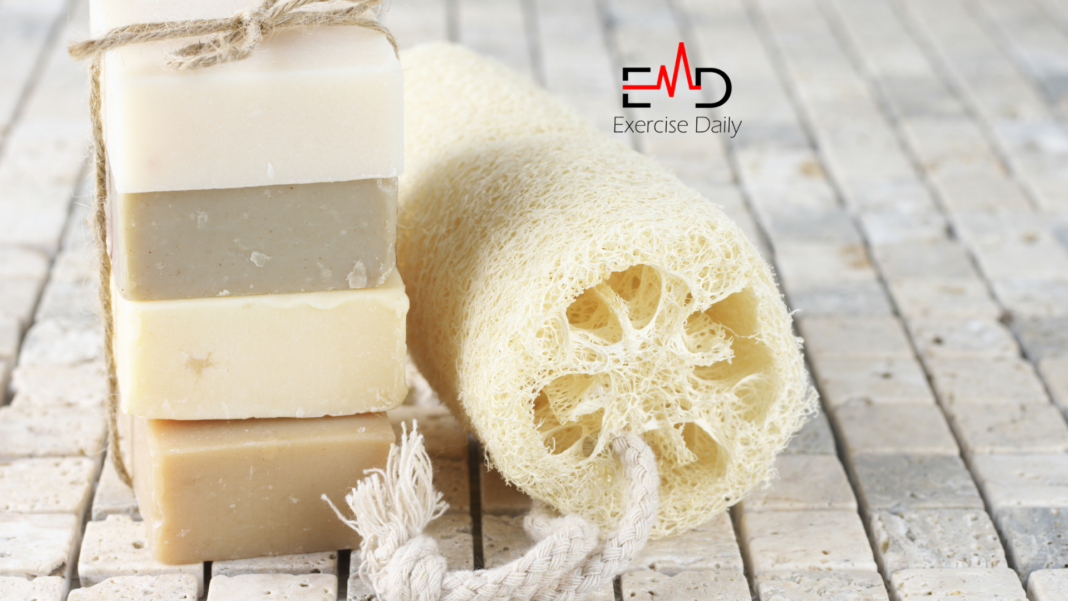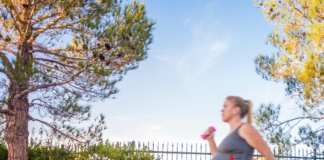Exercise Daily – Looking for the best pumice stone for feet & entire body? If so, then know about the best pumice stones in this article along with the buying guide.
When summer arrives, the majority of us look forward to wearing sandals and flip-flops. In contrast, if you have ugly calluses or corns on your feet, you might feel a bit self-conscious about showing them off.
That is why having a decent pumice stone for your feet & body may be so beneficial. It can assist you in achieving soft, smooth feet without experiencing any discomfort.
However, even though pumice stones are a straightforward product, it is essential to select the most appropriate one for your specific foot concerns and use it regularly.
A pumice stone with the appropriate substance, size, and pore size will be the most effective tool. It will be good for removing the hard, dry skin from your feet and the soles of your shoes.
If you’re in the market for a pumice stone, have a look at our best-picks product list. You can learn more about pumice stones and how they can be used to beautify the foot by continuing to read this article.
Moving forward, let’s understand the basics of pumice stone and why it is important for your feet.
What is Pumice Stone?
The pumice stone, which is formed by a mixture of water and lava, is a natural product that is best known for eliminating rough areas on feet, elbows, and hands, allowing for the appearance of smoother skin to emerge.
“When the lava/water [combination] cools down, it solidifies and hardens into a light rock with a porous texture,” explains Ana Cristina Laureano, M.D. The texture of the stone provides mild to moderate exfoliation.
Pumice stones are available in a variety of sizes and forms. Some are even connected to handles, making them even more convenient to use.
Tanya Kormeili, M.D., a board-certified dermatologist in Santa Monica, Calif., explains that this is particularly true when it comes to the feet, which can be susceptible to dryness, flakiness, and calluses as a result of severe wear and tear.
Using a pumice stone is something that both Dr. Chang and Dr. Laureano recommend to their patients. Using a pumice stone, Dr. Chang explains, “allows you to softly yet efficiently slough off dead skin and calluses to expose smoother skin.”
He also recommends using a pumice stone to exfoliate the skin. Despite the fact that it is typically harmless, it is vital to understand when and how to use it correctly. Since every exfoliating product has the potential to cause skin irritation or injury.
What is A Pumice Stone Made of?
When lava and water are combined, a pumice stone is produced. It is a light yet abrasive stone that is used to exfoliate dry, dead skin off the body. A pumice stone may also be used to soften calluses and corns. It can help to alleviate pain caused by friction.
You may utilize this stone on a regular basis, but it’s vital to understand how to use it properly. It is possible to remove too much skin, cause bleeding, or raise your chances of contracting an infection if you are not careful.
How to Use Pumice Stone on Feet?

These instructions will guide you through the process of correctly removing your tough skin. If you begin to suffer discomfort or other abnormal symptoms, discontinue the use of the pumice stone straight away.
Preparation
Bring all of your resources together in one location. Check to verify that your stone and water are both free of contaminants.
Warm water should be utilized to soak your dry, callused skin for 5 to 10 minutes. Softening your tough skin will be made easier with this method.
Add soap or oil to your water to soften it even further and enhance its moisture content. This phase should be completed in a warm bath or shower if you are using a pumice stone on your elbows, knees, or face.
Making Use of the Pumice Stone
- While you’re bathing your skin in warm water, you should also soak your pumice stone in the same water.
- Don’t use a dry pumice stone on your skin since it might cause irritation. With a moist pumice stone, you can slide it across your skin with ease, reducing the likelihood of damage.
- Wipe the target area from the soap wash and pat it dry with a towel until it is completely dry. If your skin is still harsh after soaking, continue to soak for a couple of extra minutes before drying it.
- Drain and dry the pumice stone thoroughly after it has been soaked in warm water.
- Lightly massage the abrasive side of the pumice stone on your skin in a circular motion, avoiding the eye area.
- 2 or 3 minutes of massage will do wonders for your skin. If your skin becomes sensitive or painful while you’re applying pressure, stop immediately since you’re most certainly applying too much pressure.
- When it comes to your feet, pay particular attention to the heels, the sides of your toes, and any other dry places you may identify.
- Continue pressing the pumice stone on your skin until the dead skin has been removed and the softer skin below has been revealed.
- After two to three minutes of gentle rubbing, rinse your skin with water to remove any remaining residue.
- If there are still areas of dead skin visible, repeat the procedure. To maintain the surface of your pumice stone as clean as possible, rinse it after each session.
- If you want to keep your skin smooth and supple, you may repeat this technique many times each week or daily.
Giving the Finishing Touch
- When you’re finished, add a moisturizer or oil to your skin to retain moisture and softness in your skin. After hydrating your skin, slip on a pair of moisturizing socks for an extra boost.
- After each usage, thoroughly clean your pumice stone. Under flowing water, clean the stone with a bristle brush to remove any dead skin that has accumulated.
- Apply a tiny quantity of soap to ensure that it is clean and free of any dirt before continuing. Bacteria can develop on the surface of the water.
- Do not give your pumice to other persons. Each member of the family should have their own.
- Leave the stone to dry naturally. Place it in a dry location away from moisture to avoid the formation of bacteria.
- For thorough cleaning, boil your pumice stone in boiling water for five minutes before using it again.
- Keep it away from moist locations until it dries.
- Over time, your stone will become too smooth to be effective, and it will need to be replaced. If your stone gets too tiny, too polished, or too soft, it should be replaced.
Best Pumice Stone for Feet
These pumice stones are among the best available on the market – and with hundreds of positive customer reviews to back them up, you won’t have to rely on luck by picking one off the shelf of your local drugstore.
Onyx Professional Double Sided Pumice Stone
A great number of reviewers believe that the Onyx Professional pumice stone is an excellent choice, in large part owing to the fact that it is designed with two sides.
With a wide-cell structure, you can remove undesirable calluses and rough skin on one side, while a smoother texture, which is perfect for polishing, can be found on the other.
The edges are contoured to make it easier to reach those difficult-to-smooth areas of your skin.
In spite of its porous design, this bar has excellent resistance to bacterial, fungal, and liquid absorption, which helps to prevent the formation of mildew and additional bacteria. This is only one of the reasons why it has a 4.6-star rating.
KuuCare Pumice Stone for Feet
If you’re searching for a completely natural alternative at a reasonable price, look no further. In addition to being constructed from actual volcanic lava, the KuuCare pumice stone includes a built-in hanging rope and suction-cup hook – all for a low price.
The ergonomic, ovular form of this pumice stone makes it ideal for a variety of skin-smoothing applications, including wide stretches of skin and difficult-to-reach features.
Its large perforations are great for flattening calluses on your feet that have formed over time. Aside from that, the hook is useful for drying clothes and for fast access.
Several additional applications are listed by the maker for this stone, such as de-pilling sweaters, removing cat and dog hair from mats, carpets, and vehicle seats, as well as cleaning your oven.
Although it’s best to get more than one if you want this type of versatility.
Maccibelle Salon Foot Pumice and Scrubber
Need a good deal on exfoliating tools or a collection of exfoliating equipment that is reasonably priced? Pumice scrubbers from Maccibelle Salon are a hot seller for a reason: they perform well while being quite inexpensive.
Purchasing a single pack costs less than $3, but purchasing a case of 12 costs less than 90 cents for each piece.
Nonetheless, they are double-sided for both coarse and mild exfoliation, and they are separately packed for your convenience and protection.
Despite the fact that they are not the most lasting (and have more of a pad consistency rather than a stone), reviews have stated that they are particularly effective as an economical, extra-sanitary alternative — such as when you are bringing your own exfoliant to the salon.
GILDEN TREE 2 in 1 Pumice Stone For Feet
This two-in-one pumice stone from Gilden Tree, on the other hand, is the way to go if you’re looking for something that will last at least five years and maybe longer.
As terra cotta (natural clay that has been baked in a kiln), it will not fracture, crumble, or dissolve, as many cheaper alternatives will in the long run.
The scrubber has a scrubbing texture on one side and a ribbed buffing texture on the other, and it is also double-sided.
And last but not least, it is ergonomically designed for ease of usage and comfortability in hand. It’s no surprise that it has thousands of five-star reviews.
Miliamp Professional Pedicure Foot File
This professional pedicure foot file may be used to give yourself a little extra leverage. Because it has a ceramic pumice stone attached to a beech-wood handle, it is simpler to reach your feet and apply the proper pressure than most other alternatives.
This choice is ideal for heavy-duty smoothing of wide sections of skin rather than for reaching curves or angles that are more difficult to reach.
The rough texture, according to the reviews, is very effective, and the connection string makes it easy to hang. It now has over 100 reviews and a near-perfect 4.8-star rating, which is impressive.
Features to Consider for Best Pumice Stone for Feet
Material
Each and every one of the authentic pumice stones for the foot is formed completely of natural materials since volcanic lava is the source of their creation.
Although some stones are made of natural materials, some are made of synthetic materials that may contain chemicals. Make sure you select a pumice stone that is 100 percent pure or natural to ensure that you get the most effective and healthful treatment possible.
Size
Pumice stones are available in a number of different sizes for different applications. In general, smaller stones are simpler to grip and allow you to have greater control over the regions you are exfoliating.
With a bigger stone, on the other hand, you can work more rapidly, which means your pedicure will take less time.
Keep in mind that while real pumice stones are manufactured from natural materials, their sizes might vary from one stone to the next, even within the same batch. There will be no two stones that are exactly the same size.
Shape
You typically have two choices when it comes to the form or design of a pumice stone: those with a roundish shape and those with at least one flat area on which to work.
Some individuals like spherical stones because they find it simpler to massage them over the curves of their feet.
Others prefer flat stones because they find it easier to apply pressure as needed, which is especially important when dealing with harder regions of skin on the feet.
Handle
Some pumice stones come with a wooden or plastic handle that is connected to the stone. You may not have nearly as much control over the stone if you use a handle, but you may find it more comfortable to hold in your hand.
In fact, many pumice stones don’t even have a handle at all; you simply hold the stone in your palm and rub it over the affected area of your skin.
Others have a rope tie at the end, which allows you to wrap it around your hand while you work and hang it up to dry at the end of the day.
Pore size
Because of their rough and porous surfaces, pumice stones are extremely efficient in exfoliating the skin. However, there is some variance in the size of pores between different stones.
When it comes to eliminating thick and dry skin, bigger pores stones are often more efficient than smaller pores stones. Exfoliating using stones with smaller pores is less harsh on the skin, and this might help you avoid over-exfoliating your skin.
If you’re new to using pumice stones and your feet are extremely dry, it’s generally preferable to start with a stone that has bigger pores in order to have a better feel for them.
Infusion
While most pumice stones are made of pure volcanic lava, some are infused with chemicals that can help soften, moisturize, and condition the skin, making them more effective.
Many infused pumice stones contain soap, which allows you to clean and exfoliate your feet while you’re taking a shower or bath, which is very convenient.
The following are some of the substances you may want to search for in infused pumice stones:
- Shea butter
- Vitamin E
- Aloe vera
Best Pumice Stone for Feet – FAQs
How to clean pumice stone?
For thorough cleaning, boil your pumice stone in hot water for five minutes before using it again. Allow it to air dry away from any puddles of water.
Over time, your stone will become too smooth to be effective, and you may need to replace it. If your stone gets too tiny, too polished, or too soft, it should be substituted.
How to use pumice stone on face?
For approximately 15 seconds, rub the stone in a circular motion. You should discontinue the use of the pumice stone immediately if you detect any redness or feel any burning.
After exfoliating your skin, rinse your face and neck with warm water and moisturize with a moisturizer to lock in the moisture. Use a pumice stone on your face no more than once a week.
Are pumice stones safe?
Pumice stones are a simple technique to get rid of dead skin cells that might make you want to cover your feet in order to keep them out of the public eye.
Because the stones are completely safe to use as long as you use caution when handling them.
How to store a pumice stone?
Allow for thorough drying of the pumice stones before storing them. If you store your stone when it is damp, it will stimulate the development of fungus.
After cleaning the stone, place it on a small, clean towel to allow air to circulate around it. Alternatively, you may dry the stone by placing it outside in the sun for a few hours.
What’s better pumice stone or foot file?
While both pumice stones and foot files are effective, the primary difference between them is that pumice stones are more gentle on the skin than foot files.
In this way, pumice stones are ideal for delicate and tender skin. While foot files are useful for calluses and hard skin that are challenging to remove with pumice.
How often should you pumice your feet?
Use a pumice stone on your feet around one and three times a week to keep your feet nice.
You may use the pumice stone after showering when your skin is at its softest if you don’t have time to soak your feet on a regular basis.
How to use a pumice stone in the shower?
Prepare your pumice stone by soaking it in water. Make a lather with soap on your skin.
Make use of the pumice stone on your skin, pressing it in a circular manner with mild pressure. Rinse well and repeat as necessary until all hair goes away.





